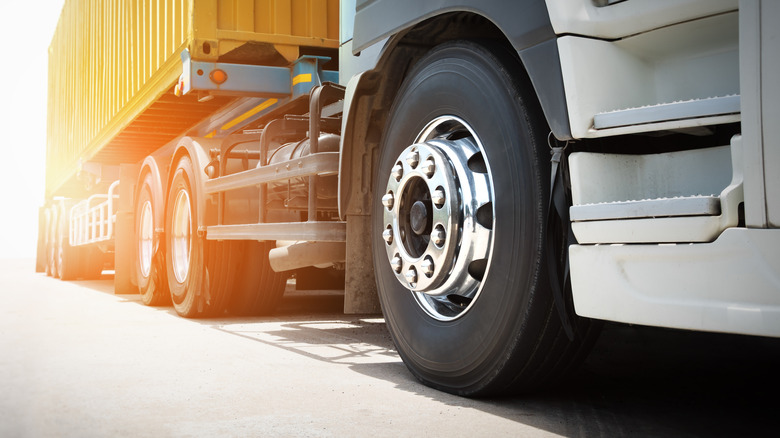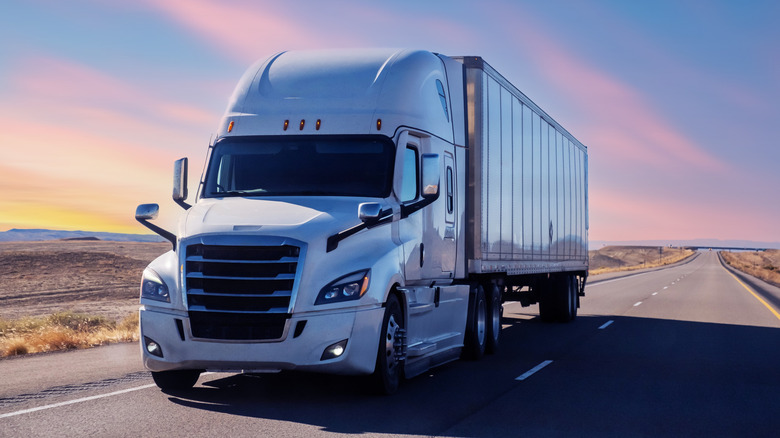What's The Difference Between A Jake Brake And Retarder In Semi-Trucks?
For heavy duty trucks like semis hauling lots of cargo over long distances, conventional friction brakes just can't do it on their own. To maintain safe speeds and prevent overheating on long descents, these trucks use the widely prohibited engine brakes or jake brakes, as well as retarders. While both braking systems are there to safely support the primary brakes, they function in very different ways. What's more, they're both intended for very different driving conditions.
The Jake Brake, short for Jacobs Engine Brake, absorbs energy instead of producing it. In other words, the system alters the engine's exhaust valve operation so that the pistons act as air compressors that absorb kinetic energy from the semi in motion. Instead of converting that compressed air into power, the Jake Brake releases that compressed air through the exhaust valves, slowing down the rotation of the crankshaft and, in turn, the truck. Unlike engine brakes, retarders do not interact with the combustion process of the engine. Instead, they apply mechanical, hydraulic, or electromagnetic resistance to the driveline to slow the rotation of the wheels.
When to use each supplemental braking system
The Jake Brake is most useful on steep declines or in emergency braking scenarios where traditional brakes might overheat or otherwise wear down quickly. Since it uses the engine itself to decelerate, it reduces reliance on air brakes, extends brake life, and improves overall control. However, there is one notable downside: The noise. Jake Brakes are infamous for their super loud exhaust sound. This has led to noise ordinances in many residential or urban areas that ban their usage around neighborhoods.
Retarders, by comparison, are much quieter (if not completely silent). Hydraulic retarders use fluid to create resistance between the retarder's rotating discs. This drag slows the motion of the drivetrain, bringing down the vehicle's speed without the use of friction brakes. Electromagnetic retarders use a stator and rotor to generate magnetic fields to slow the semi. This type of retarder is especially helpful at lower speeds. Electrodynamic retarders convert the vehicle's kinetic energy into electrical energy as it slows, which is then sent through resistors as heat.
Can semi truck drivers use both a Jake Brake and a retarder?
Many truck drivers use both systems in combination with their foot brake. Broadly speaking, Jake Brakes and retarders both work as secondary braking systems, but they're used for slightly different purposes. A Jake Brake is best for rapid deceleration, particularly on steep hills. Retarders work better for smooth, progressive deceleration during stretches of stop-and-go traffic or maintaining highway speed. A semi might come across uses for both on the daily.
However, drivers must know when (and when not to) use these systems. For instance, using a retarder on a slippery road can be dangerous and cause the wheels to lock up, while engine braking can get drivers into trouble when used in residential areas with noise restrictions. In the end, what braking system gets used when depends on the environment, road conditions, and the semi's operational needs. When used the right way, both technologies can significantly extend the life of conventional brake systems.


